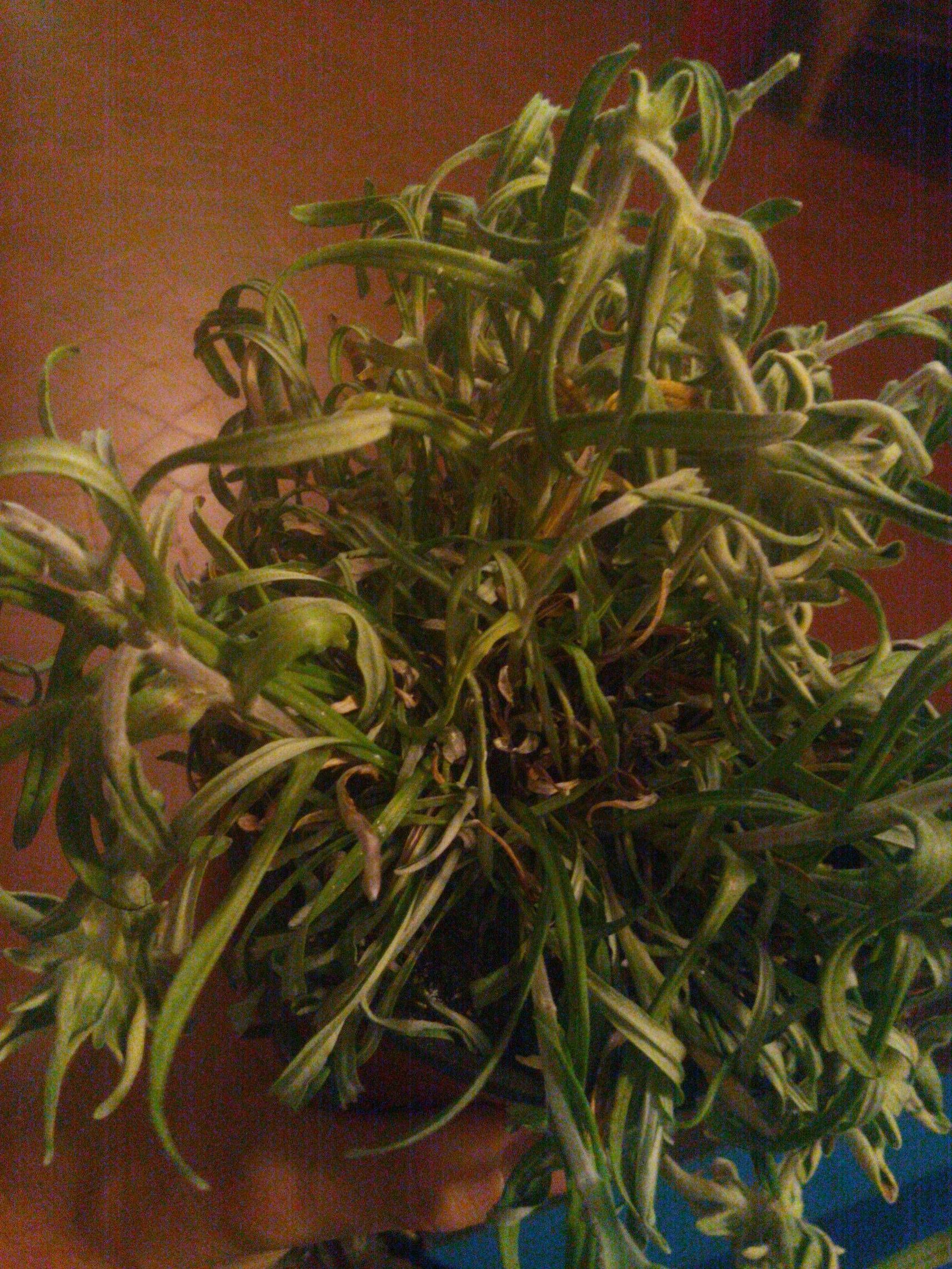I recently bought a pot of Edelweiss in central Switzerland, in a village at an elevation of ~600m. The plant was looking healthy enough and was one of about a dozen pots ligned up outside the shop in the heat and dust and sun. They didn't look like they were taken particularly good care of, nor like they needed it.
I brought the plant back to Zürich, where I live (on the Sonnenberg, at about 540m above sea level). The plant looked undisturbed after the drive home.
- Day1: The evening I got back I watered it the tiniest bit, and put it in front of the window so it would get a lot of sun. The next day was hot (~32°C) and sunny, and I went out, and when I came back it was absolutley shriveled.
- Night1: I got scared and figured low turgor means too little water, and thus watered it a lot (and afterwards read online that you should not water it too much...) still, overnight the plant recovered quite a bit. Afterwards I added some chalk to the earth - having read online that Edelweiss likes chalk.
- Day2: The next day I decided that maybe it needed more fresh air so I put it outside in a sunny spot. It was hot (~30°C) and sunny again, and again when I came back the plant was all shriveled.
- Night2: I decided to see if it recoveres at night if I do not water it, which it did (albeit somewhat less than the first time over).
- Day3: I decided maybe too much sun isn't good for it after all (though all I read seemed to suggest the opposite) so I tried to put it in a sunny, but somewhat less exposed spot which gets shade in the evening. Fortunately (or so I thought) today was also a bit cooler (25°C) and cloudier. Aaaaand when I came back the plant was more shriveled than ever, and a few leaves started turning yellow and brittle.
I'm at a loss, the only obvious conclusions atm seem that Edelweiss is either a nocturnal plant :D or that it was befallen by some misterious malady unrelated to the way I keep it :-/
Come on, this is a plant that grows somewhere on some cliffs where it gets scorching sun during the day, really cold during the night, and the occasional torrent of rain, plus, this particular one lived on some street for a while (and God knows where before that). How could my subalpine front yard have killed it? Do you have any suggestions what I could do?
Pictures:



